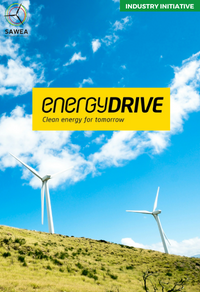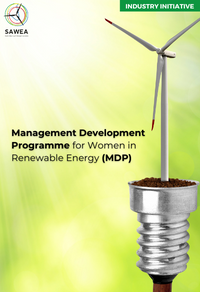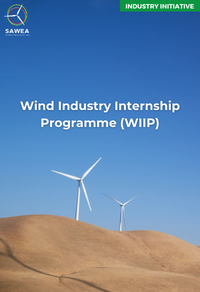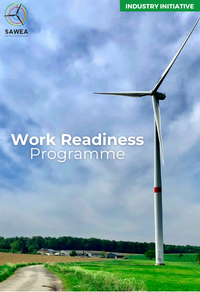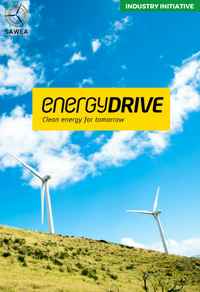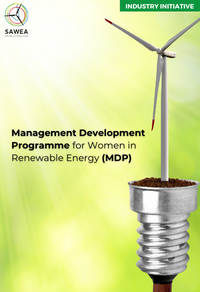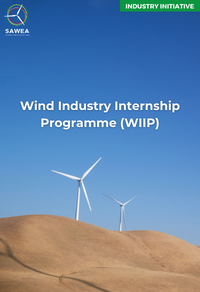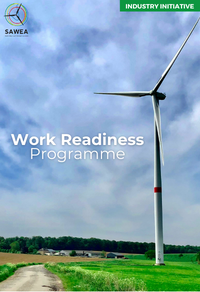CEO Voice - March 2025
Dear SAWEA Members,
As we conclude the first quarter of 2025, the return of load-shedding served as a stark reminder of the critical need to accelerate the integration of renewable energy into South Africa's energy mix. While our ambition remains unwavering, achieving our goals requires immediate and practical action on key regulatory updates, policy advancements, and crucial infrastructure investments. Transparency, urgency, and a commitment to long-term solutions are paramount if we are to effectively address our nation's ongoing energy crisis.
The 2025 National Budget has revealed the vital role of infrastructure investment in driving economic growth, with a significant focus on energy, water, ports, and logistics. While the focus on energy security may have shifted slightly, we commend the prioritisation of transmission infrastructure and the forthcoming Independent Transmission Project (ITP) Programme. Addressing grid constraints – the primary obstacle to wind energy development – as essential.
The gazette by Minister Ramagopa announcing the Ministerial Determination of 1164km of new 400kV transmission lines is welcomed as we await the ITP procurement programme structure. While we believe that the transmission build could have been better aligned to wind energy projects, the additional capacity will go a long way to support new generation capacity.
Furthermore, we continue to support the reform of the Renewable Energy Independent Power Producer Procurement Programme (REIPPPP), which are crucial in unlocking investment and accelerating renewable energy deployment. As the budget undergoes parliamentary review, we reiterate the importance of preserving infrastructure development allocations to maintain momentum in critical sectors, including energy.
Simultaneously, the amendments to National Treasury Regulation 16 under the Public Finance Management Act (PFMA), set to take effect from June 2025, signal a significant step forward. These amendments, highlighted in the 2025 Budget Speech, aim to streamline Public-Private Partnerships (PPPs) and facilitate the roll-out of transmission infrastructure. The clear distinction between high-value and low-value PPP projects, defined implementation paths, and allowances for unsolicited bids from the private sector, demonstrates the government's commitment to reforming the energy sector.
The alignment of these regulatory amendments with the National Treasury’s market-sounding exercise on ITPs, the Ministerial determination and the awaited transmission regulations, reveals the government’s intent to address grid expansion challenges. These reforms are crucial for enhancing transparency, strengthening institutional capacity, and encouraging PPPs, all of which are vital for South Africa's renewable energy transition.
Recognising the pivotal role of grid infrastructure in unlocking South Africa’s wind energy potential, we have designated 2025 as the ‘Year of the Grid’ for SAWEA. To this end, we have re-established the Grid Task Force, led by Dr Clinton Carter-Brown, to advocate for critical grid reforms. A key focus is Eskom’s Interim Grid Capacity Allocation Rules (IGCAR). We continue to contribute towards refining the IGCAR through NECOM and the Grid Task Force, aligning with global best practices for grid allocation. A transparent, publicly accessible queueing system is essential.
SAWEA’s Engagement with Deputy Minister of Electricity and Energy, Samantha Graham-Mare
As part of our ongoing advocacy for greater transparency in the Grid Capacity Allocation process and enhanced NERSA oversight to ensure fair and non-discriminatory grid access, SAWEA had the privilege of hosting Deputy Minister of Electricity and Energy, Samantha Graham-Mare, coincidentally on the eve that SAREM was approved by cabinet. This engagement provided a valuable platform to elevate key industry concerns directly to the Ministry — reinforcing the importance of investor confidence, regulatory clarity, and coordinated system-wide planning. Importantly, it also reaffirmed our mutual commitment to addressing South Africa’s energy security challenges, with wind energy positioned to play a pivotal role in the solution.
The Significance of SAREM: A Milestone for the Sector
The approval of SAREM by cabinet this month marks a pivotal moment for the renewable energy sector — not only for wind, but for the entire green economy. SAREM offers a unified national framework to guide industrialisation, attract investment, and accelerate local value chain development across the renewables sector. Particularly as the sector contends with global shifts such as EU’s firm stance on the Carbon Border Adjustment Mechanism (CBAM). Through SAREM, South Africa is positioned to seize new market opportunities. By embracing renewable energy more assertively, we can lead the charge in green industrialisation, producing globally competitive, high-value, low-carbon products that future-proof our economy and create inclusive jobs.
SAREM seeks to provide the long-awaited policy certainty the industry has called for, aligning economic growth with climate goals and energy security.
By promoting strategic infrastructure investment, reinforcing policy certainty, ensuring consistency in public procurement, and strengthening public-private collaboration, we can solidify wind energy’s role in delivering clean, secure, and sustainable power for South Africa’s future.
Regards,
Niveshen Govender
CEO

